We conclude our Preservation Month celebration of the 2021 Community Initiative Award winners in the Diamond City.
Many may not think the intersection of public health and historic preservation is obvious. I talked about it a few years ago in this post and that historic communities are (or at least once where and could be again) inherently healthy communities. However, designing, implementing, and supporting a healthy community – whether it is a historic downtown or a New Urbanism development – is a huge lift.
The City of Wilkes-Barre in Luzerne County found – and capitalized on – that intersection in a smaller, easily replicable project with their Walkitecture tour. My interview with the Director and two Health Educators of the Wilkes-Barre City Health Department covers who they are and why they created the Walkitecture tour.
If you should find yourself in northeast PA, download the app or pick up the booklet and check it out for yourself!
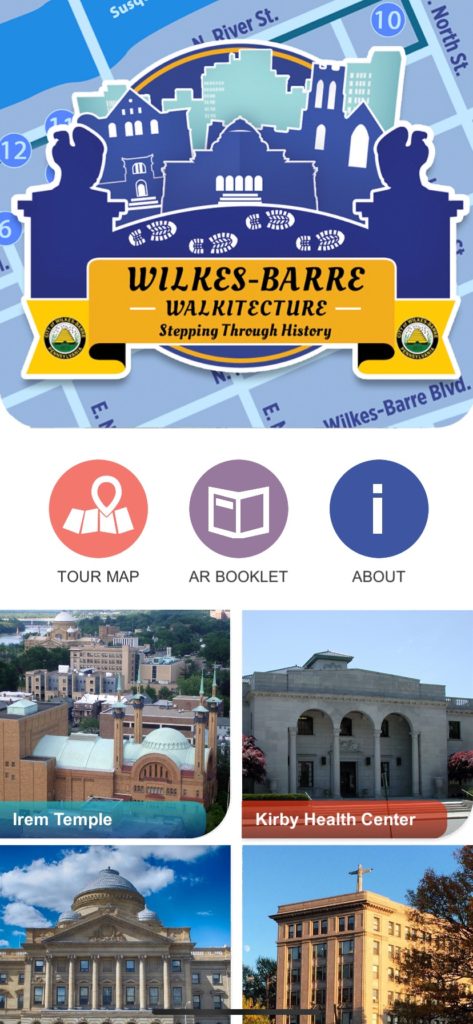
Can you tell me a little bit about your department?
The purpose of the Wilkes-Barre City Health Department is to prevent disease and to promote and protect the health of Wilkes-Barre City residents. The Department does so by assessing the needs of the public, offering public health services and creating sound public health policies.
A key component of the City Health Department, the Bureau of Preventative Health promotes healthy lifestyles and the prevention of diseases through education, assessments and screenings.
The Wilkes-Barre Health Department partnered with the Wilkes-Barre Preservation Society to encourage exercise while learning about the city’s historic buildings. What inspired this effort and partnership?
The Education Department works under a Safe and Healthy Communities grant, which promotes a healthy lifestyle consisting of exercise, nutrition, and wellness. This project was funded by the Pennsylvania Department of Health’s Preventive Health and Health Services Block Grant.
By designing a low impact 2.2 mile walk along with historic district of Wilkes-Barre our department met two goals: to have people walk at their own pace and see the architectural and historical significance of the city.
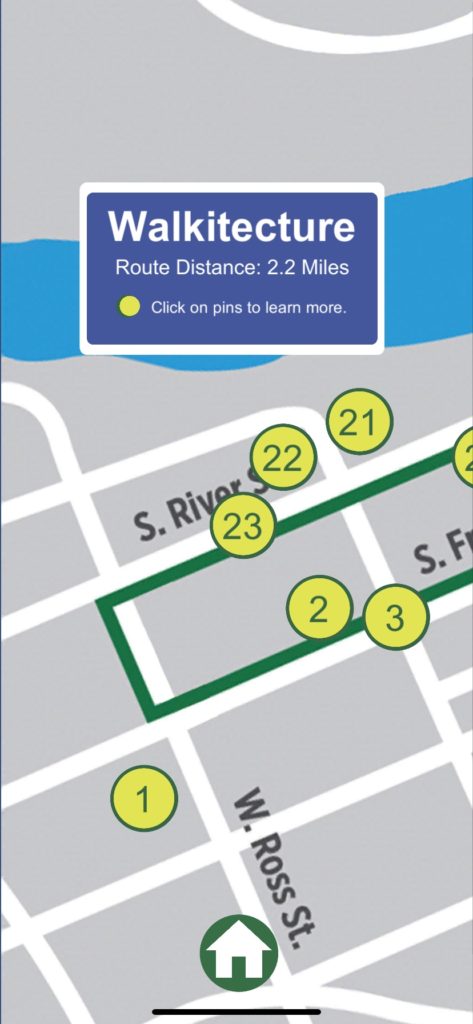
How did you choose which buildings to feature?
We worked on the theory that every building had a story to tell. Our criteria were historical significance, upkeep, relevance to the city’s growth and was the location within the confines of the 2.2-mile route. Most of the buildings we eliminated were not within the route.
The Wilkes-Barre Preservation Society had accurate information along with a library of vintage and current photos.
What made you choose the downtown historic district as the place for a Walkitecture tour? Is it the density of residents, a love of local history and architecture, or is the promotion of the downtown one of the City’s or County’s tourism objectives?
Through the Walkworks program, the Wilkes-Barre Health Department was tasked with doing a route that would be more city oriented and terrain friendly, if you will. We wanted a route that would be easily accessible and have less time-consuming obstacles for a walker like high traffic intersections.
Once we had the practicalities in line, everything else fell into place. The two city colleges, Wilkes University and King’s College, as well as downtown luxury apartments became a natural constituency. The buildings and architectural renderings have stood the test of time. These historical mainstays are still another option for visitors to see while they visit on a business trip, family reunion and college visitations.
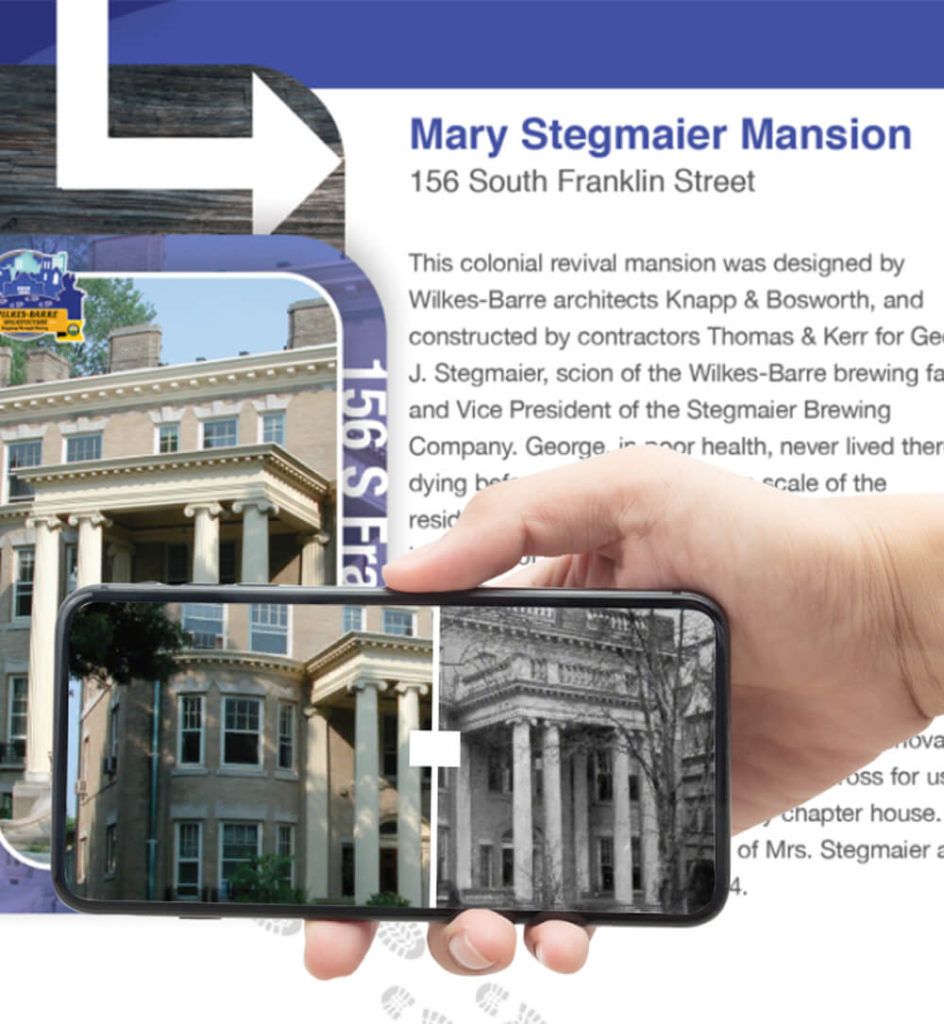
What part of the project was the most meaningful to you, and why?
Walkitecture was an innovative effort that brought physical activity and modern technology. Melding education, activity and history, Walkitecture is a journey that can start at one’s finger tips and end with feet “Stepping Through History”.
The app is something unique to the work plan of the Department. Furthermore, it was a collaborative effort. The Director spearheaded the innovation. He along with the two health educators named, researched, wrote, and assembled the visual material provided by the Preservation Society.

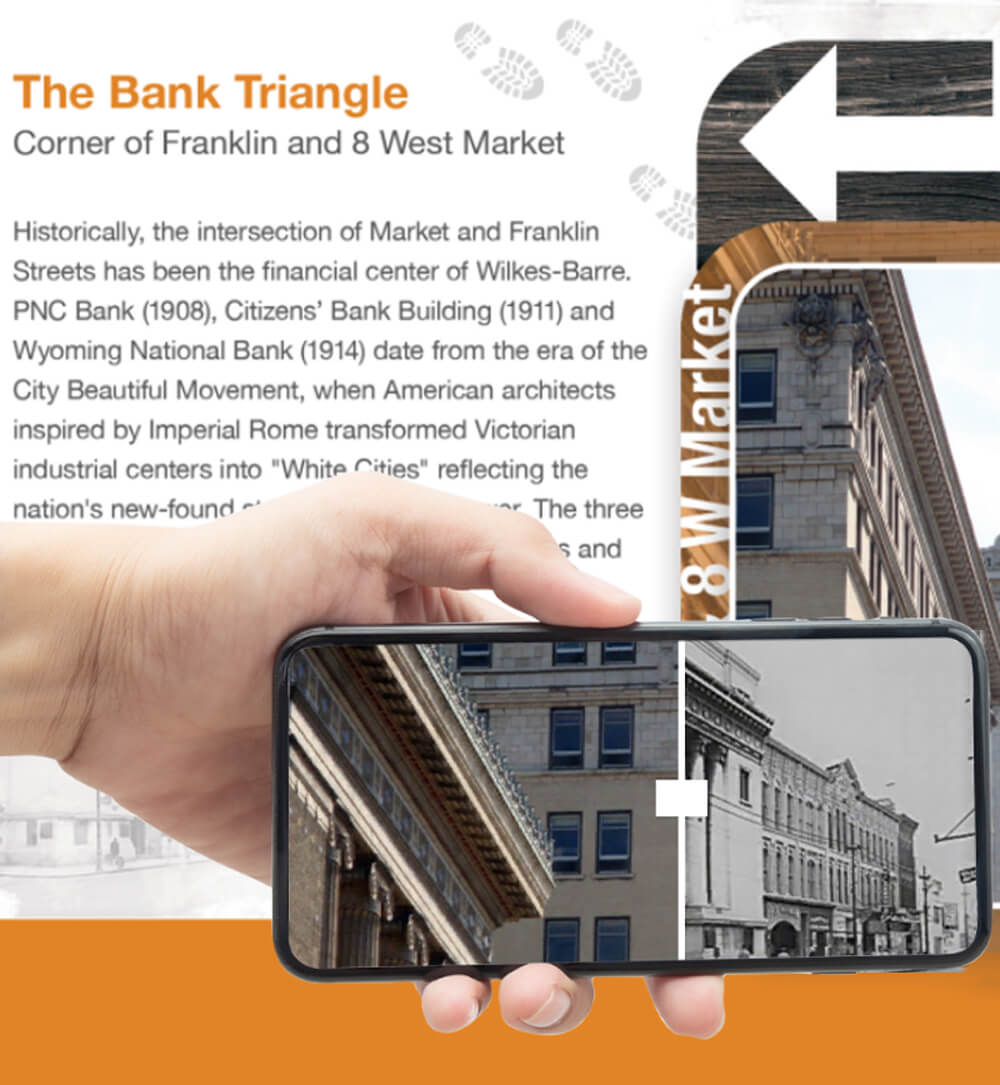
The Department designed the hard cover book, proofed it, scouted the walk signage for a accurate mileage, and assigned the Department of Public Works of the City to install the signs. When all was said and done, the department and the city had a usable, sustaining product we can be happy to be associated with.
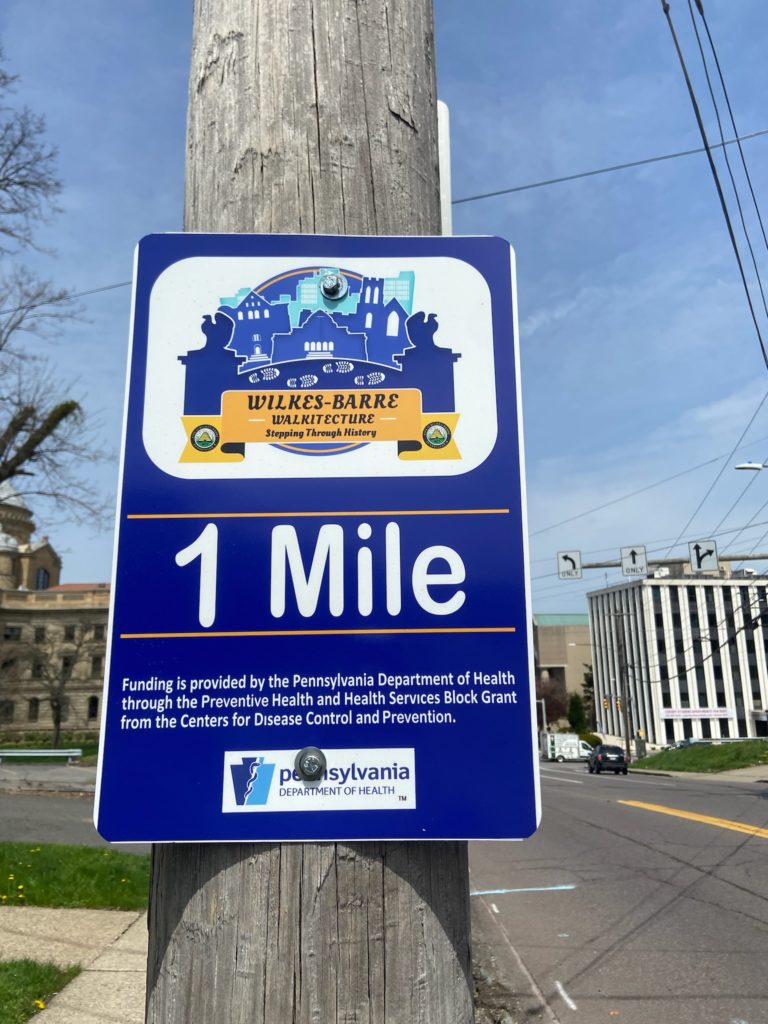
Since the launch of the Walkitecture app, have you noticed individuals, families or groups who appear to be “Stepping Through History” along the 2.2-mile loop? What kind of feedback have you gotten for the program and app?
The Health Department has heard from local hotels about the program. During the summer of ‘21, people from South Carolina, Bethesda Maryland, Olean, New York, Denver, Colorado and Piqua, Ohio made the trip after seeing the app online.
Local families have referred their out of town guests to it as a way of showing off the heritage of the city. Out of town visitors who once lived here have taken their kids on walks. Schools have taken students on walks during summertime activities.
In May, the local chapter of “Get Your Tail On the Trail” part of the D&L Heritage Trail will hold a Walkitecture event in the city.
This project was supported by a grant from the PA Department of Health. What advice would you have for other communities interested in developing the same type of program leveraging their community’s history?
Don’t be afraid of the technology. With the right vendor you will get a consistent and long-lasting product. Utilize a partner with accurate knowledge of your history and use it. Involve your entire team assigning people to their strengths.
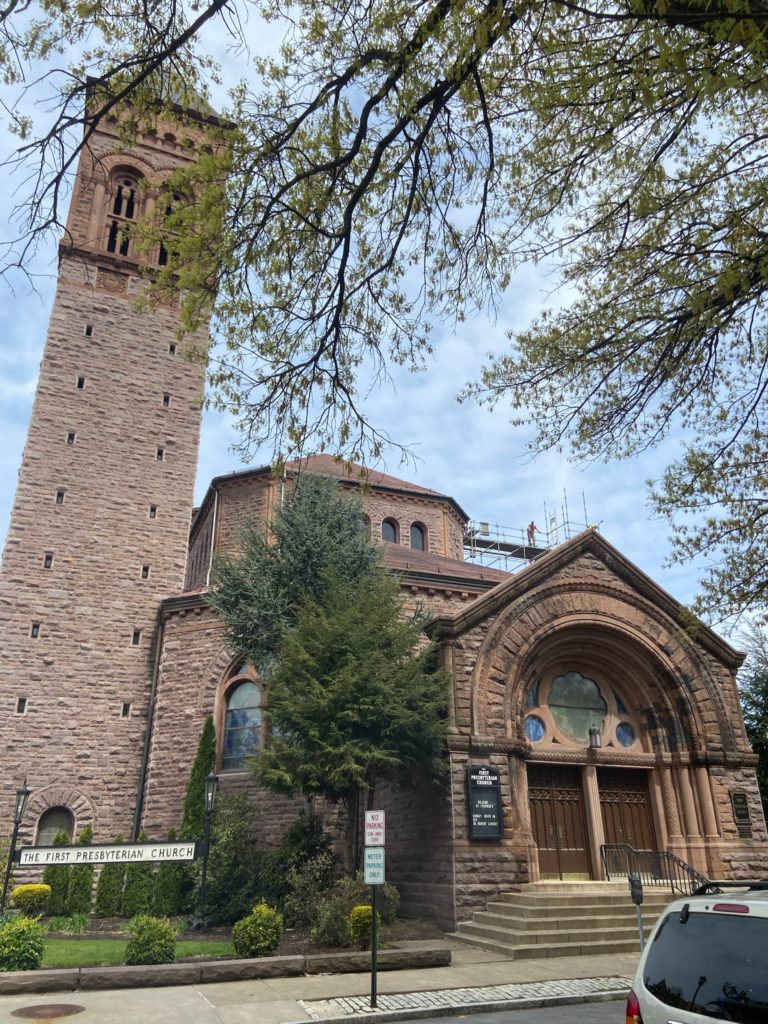
Finally, once finished never be afraid to execute and promote it constantly. Build the app and the people will scroll.
Are there other organizations, people, or companies you’d like to acknowledge for their contributions to the project?
VizVibeLLC is the company that created the app. Kevin Jones and his team did a great job. Also, the Wilkes-Barre Preservation Society, WNEP TV, WBRE TV, Fox 56 TV, Discover NEPA, The Citizens’ Voice and Times Leader newspapers for their help in promoting it after its launch.
Comment Policy
PHMC welcomes and encourages topic-related comments on this blog. PHMC reserves the right to remove comments that in PHMC’s discretion do not follow participation guidelines.
Commenters and Comments shall be related to the blog post topic and respectful of others who use this site.
Commenters and Comments shall not: use language that is offensive, inflammatory or provocative (this includes, but is not limited to, using profanity, obscene, or vulgar comments); disparage other commenters or people; condone illegal activity; identify the location of known or suspected archeological sites; post personal information in comments such as addresses, phone numbers, e-mail addresses or other contact details, which may relate to you or other individuals; impersonate or falsely claim to represent a person or an organization; make any commercial endorsement or promotion of any product, service or publication.
If you would like to comment on other topics not related to this blog post but related to PHMC, please fill out the PHMC Contact Us Form.
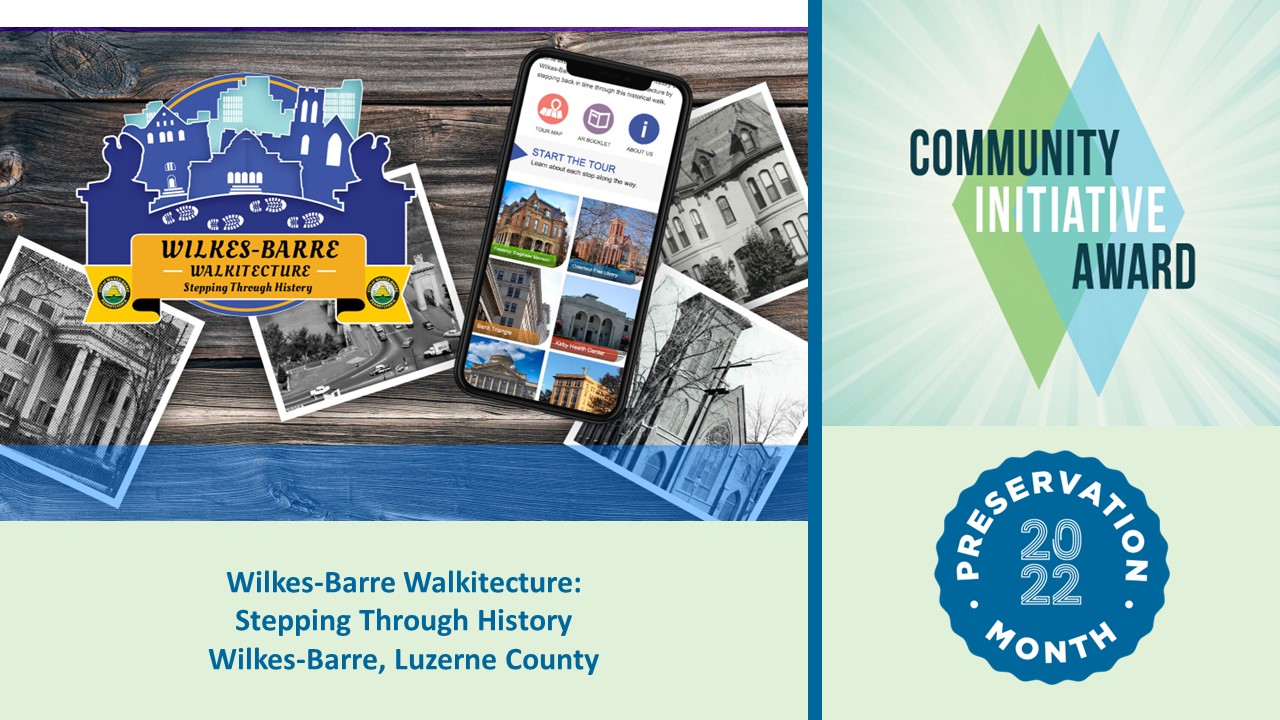
Leave a Reply